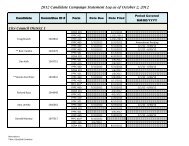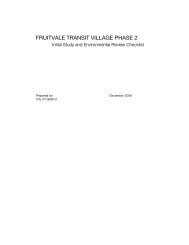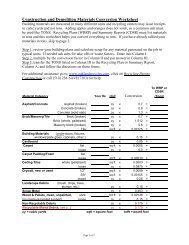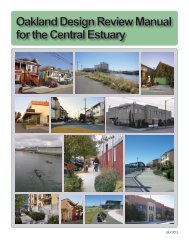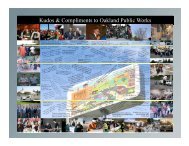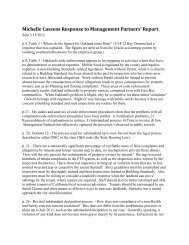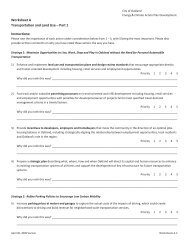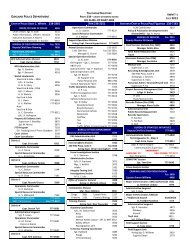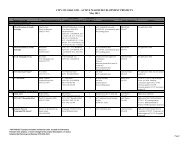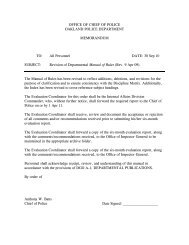Intelligent Transportation Systems - City of Oakland
Intelligent Transportation Systems - City of Oakland
Intelligent Transportation Systems - City of Oakland
Create successful ePaper yourself
Turn your PDF publications into a flip-book with our unique Google optimized e-Paper software.
9.3.2 Training Requirements<br />
Effective O&M requires an on-going commitment to training, especially in a rapidly<br />
changing field <strong>of</strong> technology like ITS. The <strong>City</strong> <strong>of</strong> <strong>Oakland</strong> should develop and maintain<br />
an on-going training program to provide a well-trained and cross-trained staff for both<br />
operating and maintaining systems.<br />
The first step in determining the training needs and whether staff is adequately trained is<br />
to define the knowledge, skills, and abilities that are needed for each staff position within<br />
an organization. A training plan or program should then be developed to identify training<br />
opportunities to provide employees with the needed knowledge, skills, and abilities. The<br />
program or plan should focus on gaps between minimum requirements for the position<br />
and the requirements to perform in the position at an optimal level. Individual staff<br />
members should know the optimal knowledge, skills, and abilities for his or her position.<br />
Supervisors should include a review <strong>of</strong> optimal knowledge, skills, and abilities with the<br />
employee during periodic performance reviews and identify areas where training is<br />
needed to bring the employee up to the optimal level.<br />
Since maintenance <strong>of</strong> fiber optics requires more specialized training, an on-call contract<br />
should be considered to provide support in maintaining and enhancing the <strong>City</strong>’s fiber<br />
optic network, specifically for installing new fiber and splicing fiber. If the <strong>City</strong> decides to<br />
maintain their own fiber network, they will need to purchase special equipment such as<br />
power meters, fusion splicers and splice cleavers, and attend an outside training course<br />
to train staff.<br />
9.3.3 Maintenance Equipment<br />
Diagnostic and testing systems can improve system maintenance and enhance the<br />
operation <strong>of</strong> the system. <strong>City</strong> maintenance staff currently has good diagnostic and<br />
testing equipment for traffic signals and some equipment for diagnosing communication<br />
problems. Most <strong>of</strong> the diagnostic and testing equipment required for maintaining traffic<br />
signals is already owned by the <strong>City</strong>. This includes:<br />
• Cabinet tester<br />
• Controller tester<br />
• Conflict monitor testers<br />
• Detector tester<br />
• Load switch tester<br />
• Flasher tester<br />
• LED tester<br />
• Oscilloscopes<br />
• Multimeters<br />
• Bench-built simulators<br />
• Computers used for database inventories and equipment diagnostics<br />
Additional diagnostic systems and s<strong>of</strong>tware should be considered for CCTV cameras,<br />
DMS and communications. As the <strong>City</strong> installs new fiber optic cable, new optical<br />
transmission equipment with built in diagnostic features should be procured if the <strong>City</strong><br />
plans to maintain the system. This will include:<br />
<strong>City</strong> <strong>of</strong> <strong>Oakland</strong> ITS Strategic Plan<br />
116 September, 2003




